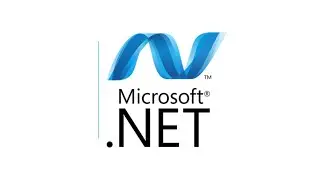How to Install .NET Framework 3.5 with Offline Installer on Windows 11!
Download the offline installer
The .NET Framework 3.5 SP1 offline installer is available on the .NET Framework 3.5 SP1
Download page: https://www.microsoft.com/en-us/downl...
Once you download the file, run it. You may see the configuration dialog if you try to run an app that requires .NET Framework 3.5. Choose Install this feature to enable .NET Framework 3.5. This option requires an Internet connection.
It is available for Windows versions prior to Windows 10 as well as Windows 11.
What is .NET Framework?
.NET Framework is a software development framework for building and running applications on Windows.
.NET Framework is part of the .NET platform, a collection of technologies for building apps for Linux, macOS, Windows, iOS, Android, and more.
The .NET Framework for users
If you don't develop .NET Framework apps, but you use them, you aren't required to have specific knowledge about .NET Framework or its operation. For the most part, the framework is completely transparent to users.
If you're using the Windows operating system, .NET Framework may already be installed on your computer. In addition, if you install an app that requires .NET Framework, the app's setup program might install a specific version of the framework on your computer. In some cases, you may see a dialog box that asks you to install .NET Framework. If you've just tried to run an app when this dialog box appears and if your computer has internet access, you can go to a webpage that lets you install the missing version of .NET Framework. For more information, see the Installation guide.
In general, you shouldn't uninstall versions of .NET Framework that are installed on your computer. There are two reasons for this:
● If an app that you use depends on a specific version of .NET Framework, that app may break if that version is removed.
● Some versions of .NET Framework are in-place updates to earlier versions. For example, .NET Framework 3.5 is an in-place update to version 2.0, and .NET Framework 4.8 is an in-place update to versions 4 through 4.7.2. For more information, see .NET Framework Versions and Dependencies.
On Windows versions before Windows 8, if you do choose to remove .NET Framework, always use Programs and Features from Control Panel to uninstall it. Never remove a version of .NET Framework manually. On Windows 8 and above, .NET Framework is an operating system component and cannot be independently uninstalled.
Multiple versions of .NET Framework can coexist on a single computer at the same time. This means that you don't have to uninstall previous versions in order to install a later version.
.NET Standard is a formal specification of the APIs that are common across .NET implementations. This allows the same code and libraries to run on different implementations.
➤ MORE INFORMATION & RESOURCES:
✓ https://docs.microsoft.com/en-us/dotn...
✓ https://dotnet.microsoft.com/learn/do...
✓ https://winaero.com/blog/install-net-...
✓ https://winaero.com/blog/offline-inst...
#0x800F081F #0x800f0950 #0x800F0906 #0x800f0954 #0x800f0907 #0x800F0922








![[KB5027301] Windows 11 Build 22631.1900 – TOAST NOTIFICATIONS OFF & WIFI IMPROVEMENTS + EMOJI 15!](https://images.videosashka.com/watch/I07cPm2emn4)
![[KB5027292] WHAT'S NEW in Windows 11 Build 22000.2121 (21H2)?!](https://images.videosashka.com/watch/fqCi09jNfXI)

![[KB5027305] Windows 11 Build 22631.1835 – NARRATOR & WIFI IMPROVEMENTS!](https://images.videosashka.com/watch/QivjTLKsBgE)

![[KB5026446] Windows 11 Build 22621.1776 – Moment 3 Update!](https://images.videosashka.com/watch/whs9cCxp3AA)
![[KB5023778] Windows 11 Build 22621.1483 (22H2) - A COUPLE OF NEW FEATURES!](https://images.videosashka.com/watch/doR6QfR68zQ)
![[KB5022906] WHAT'S NEW IN WINDOWS 10 BUILD 19045.22673?](https://images.videosashka.com/watch/sMN-kEArPOE)
![[KB5022913] Windows 11 Build 22623.1343 (22H2) - SO MANY NEW FEATURES ARE HERE!](https://images.videosashka.com/watch/Ffk5xF3JGHs)
![You CAN Still Upgrade from Windows 8.1 to Windows 11 in 2023! [Full Guide]](https://images.videosashka.com/watch/DaDfgF9GVYs)


![INSTALL/REINSTALL Microsoft Store using COMMANDS on Windows 10/11! [NEW WAY 2023]](https://images.videosashka.com/watch/cuygERfefoQ)
![[KB5022360] WHAT'S NEW IN Windows 11 22H2 Build 22621.1194?](https://images.videosashka.com/watch/lSTeVom7e_o)
![[KB5022358] WHAT'S NEW in Windows 11 Build 22621.1245 & 22623.1245?](https://images.videosashka.com/watch/rZd870bKrvA)
![INSTALL/REINSTALL Microsoft Store on Windows 10/11! [A NEW WAY] 2023](https://images.videosashka.com/watch/xtSnv3eBOQw)
![Install/Add Microsoft Store to Windows 10 LTSB/LTSC/ANY Version [2023]](https://images.videosashka.com/watch/jkBECPmXW8M)
![[KB5022360] WHAT'S NEW IN Windows 11 22H2 Build 22621.1192?](https://images.videosashka.com/watch/6Tl59KvJf7Q)
![[KB5021304] WHAT'S NEW in Windows 11 Build 22621.1037 & 22623.1037?](https://images.videosashka.com/watch/rNvHqVgFHtI)
![[KB5020030] Windows 10 Build 19044.2311 Brings TASKBAR SEARCH IMPROVEMENTS AND MANY FIXES!](https://images.videosashka.com/watch/AI5sy7bcUdY)
![[KB5020044] Windows 11 Build 22621.898 (22H2) - NEW COOL FEATURES!](https://images.videosashka.com/watch/YfpQ7xLq924)
![[KB5019157] NEW UPDATE! WHAT'S NEW IN WINDOWS 11 BUILD 22000.1281 (21H2)?](https://images.videosashka.com/watch/xhBFLMmxY4o)
![[KB5019157] NEW UPDATE! WHAT'S NEW IN WINDOWS 11 BUILD 22000.1279 (21H2)?](https://images.videosashka.com/watch/pKu0xaWnxNc)
![[KB5019980] WHAT'S NEW in Windows 11 22H2, Build 22621.819?](https://images.videosashka.com/watch/HsNy8Fq1IcM)